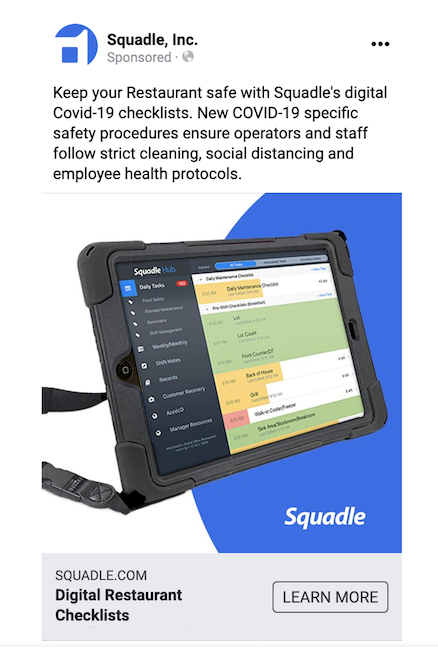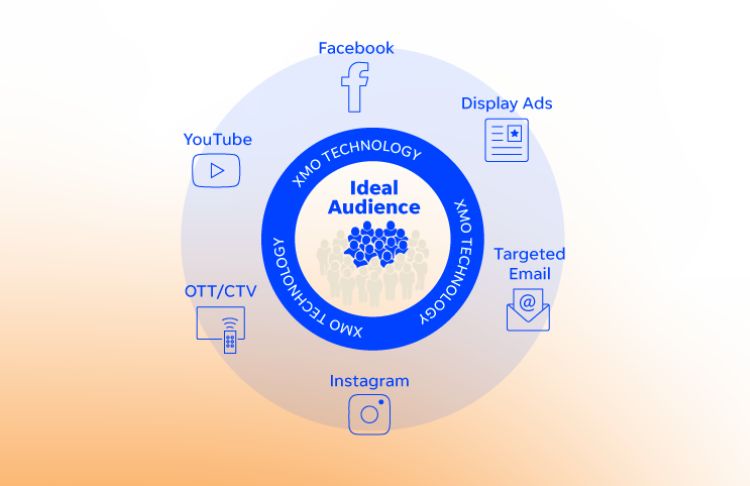2020 was a weird one, to say the least. Everyone’s lives have been affected in some way, shape, or form within the past 12 months. And businesses in all industries have not been spared.
When it comes to paid advertising, many businesses have adjusted to the changing conditions in remarkable ways to continue driving business for themselves over the past year. I have also had to make adjustments to the way I manage paid advertising accounts for a number of clients based on their respective industries.
If you’re a fan of football, I guess you can say that a lot of trick plays were needed to be drawn up in order to move the chains.

In this post, I will explain five paid advertising strategies I used in 2020 that helped businesses adapt and survive in the paid digital ad realm and how they can help inform your 2021 paid advertising strategy.
1. Messaging Pivots
One of the more immediate and impactful strategies I used during 2020 was the pivoting of ad copy and messaging for many of my clients. The point of doing so was not only a reactionary response to the COVID-19 pandemic but also a strategic pivot to maximize performance.
With the nature of everyday business being changed dramatically within a short window of time, messaging had to be adjusted not only to stay relevant to the target audiences but to also convey that the brands who were advertising were understanding of the current situation. As a result, these changes weren’t fully from a promotional or “relevance” stand-point, but rather an entire shift in digital branding.
The restaurant industry is one of the best examples of dramatic day-to-day operational changes. Restaurants, like many other businesses, were very clearly impacted by the pandemic this year. As a result, companies who service them were equally affected. As the daily operations at restaurants needed to adapt, so did the positioning of companies in the space for providing software and services to them.

This domino effect cascaded all the way down to the paid media landscape where we had to take the current social and economic climate into consideration with our ad copy and the images used. The ads had to convey a sense of understanding while still providing value to the end-user.
We did this by being honest with our advertising and addressing the elephant in the room that was COVID-19. We didn’t want to use the same messaging we had used before because it would appear tone-deaf and insensitive to the restaurants who were (are) facing a very real existential crisis.
What this means for your 2021 online advertising strategy:
Depending upon who you ask, the pandemic isn’t expected to last forever. That’s why it is important to derive some valuable insight into why these strategies were so effective and how you can apply those learnings going forward. Although I mentioned that relevance was only one factor in the reason to change the messaging, it was an important lesson that companies during regular times often fall into the trap of: complacence.
With messaging and ad copy, it is easy for businesses to conclude that what they’re doing or the copy that they’ve implemented is “what works,” or quite simply is the only option going forward. This couldn’t be any further from the truth, and the hard work and A/B testing that should be devoted towards improving ad copy are rarely ever conducted.
Instead, many businesses will find copy that drives results and just double down on that. Not to say this isn’t what you should do entirely, however you should always be rolling out competing variations to see if you can improve.
One of the positives (if any) the pandemic had on advertising was that it forced marketers to get creative in how they not only portray their products but their businesses as well. The true creative nature of marketing can never be overlooked.
2. Strategic Offers
Similar to messaging pivots, reexamining the offers that were live for many clients was a practice that was necessary, particularly at the start of the pandemic. Given the economic circumstances, it didn’t seem either appropriate or practical from a business sense to run certain offers. Creating new offers that accommodated the current climate was a necessary flexibility.
Within the restaurant industry, there were options not only to create new promotions that would increase business on the tech side but also opportunities to give back to a community that their very existence relies upon. A great example of this was Toast’s “rally for restaurants” campaign that aimed to drive the purchase of gift cards for local restaurants.

Not only did it drive more business for these restaurants, but it also showed how supportive businesses can be towards each other when everyone is affected.
In terms of lead generation and sales, strategic offers included COVID-related product releases such as external temperature takers as well as special discounts and time-sensitive offers. Another opportunity that arose throughout the year was the leveraging of industry expertise to promote content that was relevant and specific to the COVID-19 economy.
Promoting content to help the potential customer navigate their way through the pandemic not only proved to be helpful to these individuals but also drove awareness and interest for the businesses who wrote the content.

How this can impact your 2021 digital marketing strategy:
You don’t need the backdrop of a global pandemic in order to create and execute strategic offers. Like many of these other paid advertising strategies that were used throughout the year, the pandemic itself applied the urgency to explore them. Many advertisers would have simply pushed off the riskier strategies without the existential need to push the boundaries of their marketing efforts.
What is important to take away from 2020 is that these strategies can be essential to moving the needle for your business and they truly will set you apart from the competition if they are executed properly.
3. Strategic Budget Allocation
Budget allocation is at the foundation of every paid marketing strategy. However, taking the pandemic into account, messaging pivots, and strategic offers, it was important to outline exactly where we allocated spend and to do so in the most calculated manner possible.
During certain months of the year, it was more advantageous to be conservative with budget spending so we could save that money for when businesses opened back up or at least began operating at a higher capacity.

For many businesses, doubling down on branded and core retargeting campaigns was essential through some of the toughest months of the year. Re-examining our branded keyword ads, extensions, and landing pages was an essential must throughout the year.
Doing the same for any form of retargeting campaigns that we launched allowed us to get a good temperature gauge on how the core audience was responding to the pandemic and subsequent digital marketing efforts. Increases in results from these campaigns indicated to us that it was time to start branching out into more prospecting efforts.
How to apply these learnings to your 2021 paid advertising strategy:
Added focus towards branded and retargeting campaigns gave us the opportunity to put the magnifying glass on the ways in which we were marketing to these audiences. This gave us plenty of time to focus on landing page copy and design as well as A/B tests in regards to both landing pages and ads.
The findings of all of these efforts gave us a much clearer look into the core target audiences either searching for our branded terms or those who have visited the website. Once again, the added focus to these campaigns and audiences aren’t completely reliant on a global pandemic. You should always pay a little extra attention to the audiences familiar with your brand. Their response to your marketing efforts will guide your decisions on how to prospect to net new users.
4. Funnel Prioritization & Optimization
I believe in the importance of marketing funnel optimization. The primary reason for this is that so many businesses go about it in the wrong way. Companies will either focus too much on one end of the funnel or the other without paying enough attention to all of the stages in-between. Throughout 2020, the focus on how the marketing and sales funnel was approached from a paid perspective had never been more important.
Marketing and sales funnels can vary widely depending upon your business model and the industry that you operate within. For some, the path to sales and revenue is much shorter and more direct than others. For industries that require a greater deal of information and knowledge in order to make a purchasing decision, the marketing funnel may become an extensive process.

Throughout the year, I had to make several changes in how we approached lead generation and sales for many clients. During the peak of the pandemic, it was highly unlikely that we were going to be driving many low-funnel marketing leads. Many businesses and individuals were simply not within the buying stage regardless of their marketing and sales qualifications.
In this instance, we had to prioritize higher funnel offers in order to drive leads that would ultimately be revisited under better economic circumstances. As mentioned earlier in the post, some clients reverted to promoting content. Others focused on branding and keeping their business top-of-mind throughout the lockdown period. When the economy began to open up for many, the focus shifted towards lead nurture and how we could better assist those who have entered the marketing funnel to continue their journey to sales.
How to use this insight in your 2021 paid advertising:
The funnel is always important, but it is critical to have flexibility in uncertain times. If all of your marketing collateral is aimed at direct conversions to sales or any lower portion of the funnel, then you may find yourself in a tough spot when something as economically catastrophic as a global pandemic happens.
Having the resources at hand or at least the ability to quickly create top-of-funnel content is a valuable advantage. Additionally, having a clear understanding of how to nurture leads throughout a funnel is another critical lesson to be learned. The companies who had strong understandings of their marketing funnel were far more agile throughout these uncertain times.
5. Geolocation Strategies
The pandemic has impacted areas of the globe in different ways. Within the United States, the restrictions and government mandates were highly varied given where you were in regards to state lines. Re-examining targeting strategies for my clients was crucial throughout the year, and many campaigns and ad sets were broken out to accommodate for the differences in the user experiences.
For example, different states have had varying restrictions on restaurants. Some restaurants were allowed to be fully open in parts of the year, so we could run ads that had copy and creative relevant to those individuals on Facebook. The same can be said for restaurants that could only serve customers outside, or even the cases where online ordering was the only option for these businesses.

The strategy was to break out these locations into groups and target those groups with the ads that would be most relevant given the current lockdown restrictions.
How to carry this into your 2021 paid advertising:
What can be taken away from this strategy was how people in certain locations and cultures react to advertising differently. Under “normal” circumstances, such refined targeting could be looked at as going “overboard” — however, the learnings from these experiments were very helpful.
For example, it made us take a deeper look at how our ads converted across certain geolocations over others historically. These differences opened the door for us to get more creative with how we message and market to these specific areas.
Moving Forward to 2021
Although the future may be uncertain, one thing you can count on is the experience you gather when placed in difficult situations. 2020 was an incredibly tough year for most people — digital marketers included. Having the versatility to find creative answers to new problems is the key to survival during periods of time like this. If you’re willing to adapt your business strategy as well as your marketing strategy you will survive, thrive, and push forward.






